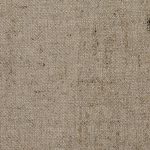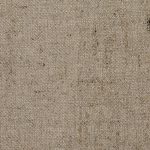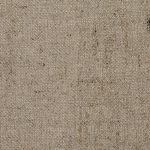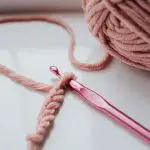Creating a DIY fabric freshener with witch hazel is simple and effective. Just mix 1 cup of water and ½ cup of witch hazel in a spray bottle, then add 10-15 drops of your favorite essential oils for a pleasant scent. Shake well before each use and spray lightly from about 12 inches away. Store it in a cool place and enjoy fresh fabrics! There are even more ways to enhance your spray with natural ingredients.
Table of Contents
Key Takeaways
- Combine 1 cup of water and ½ cup of witch hazel in a clean spray bottle for effective odor elimination.
- Add 10-15 drops of your favorite essential oils for a pleasant fragrance.
- Shake gently before each use and spray lightly from about 12 inches away.
- Store the fabric freshener in a cool, dark place to maintain potency.
- Experiment with additional natural ingredients like lavender or baking soda for enhanced scent and odor absorption.
Benefits of Using Witch Hazel in Fabric Fresheners
When you’re looking for a natural way to revitalize your fabrics, using witch hazel can be a game-changer. This versatile ingredient acts as a gentle astringent, helping to eliminate odors without harsh chemicals.
It’s safe for various fabric types, ensuring your clothes and linens stay fresh without causing damage. Witch hazel also has antibacterial properties, which means it can help reduce the growth of bacteria that cause unpleasant smells.
Plus, it dries quickly, leaving your fabrics feeling soft and invigorated. You’ll love how easy it’s to incorporate witch hazel into your routine, making your home smell inviting while being mindful of the environment.
Witch hazel dries quickly, revitalizing your fabrics while naturally enhancing your home’s inviting scent.
With witch hazel, you can enjoy a rejuvenating scent naturally and effectively.
Essential Ingredients for Your DIY Fabric Freshener
Creating your own fabric freshener is a straightforward and rewarding project that lets you harness the power of natural ingredients. To get started, you’ll need a few essential components. The main ingredients include witch hazel, which acts as a natural astringent, and water, which helps dilute the mixture. You may also want to add essential oils for fragrance. Here’s a quick reference table for you:
| Ingredient | Purpose | Suggested Amount |
|---|---|---|
| Witch Hazel | Natural astringent | 1 cup |
| Water | Dilution | 1 cup |
| Essential Oils | Fragrance | 10-15 drops |
With these ingredients on hand, you’re well on your way to creating a rejuvenating fabric spray!
Step-by-Step Instructions to Create Your Fabric Spray
To make your fabric spray, start by gathering all your ingredients and a clean spray bottle.
Gather your ingredients and a clean spray bottle to get started on making your fabric spray.
Measure one cup of water and pour it into the spray bottle. Next, add half a cup of witch hazel. This will help eliminate odors and provide a fresh scent.
If you’d like, you can enhance your fabric spray with essential oils; add about 10-15 drops of your favorite scent.
Once you’ve added everything, securely screw on the top of the spray bottle. Shake it gently to mix the ingredients thoroughly.
Your fabric spray is now ready! Just remember to test it on a small area of fabric before using it widely, ensuring it won’t stain or damage your items.
Happy spraying!
Tips for Using and Storing Your Fabric Freshener
Now that you’ve crafted your fabric freshener, it’s important to know how to use and store it for maximum effectiveness.
First, shake the bottle gently before each use to mix the ingredients. Spray lightly on fabrics from a distance of about 12 inches, avoiding over-saturation. A quick spritz is usually enough; you don’t want your items to feel damp.
Store your freshener in a cool, dark place to preserve its potency. If you notice any separation over time, just shake it up before use.
Always label your spray with the date you made it to keep track of freshness. Finally, try to use it within a few months for the best results.
Enjoy your revitalized fabrics!
Alternative Natural Ingredients to Enhance Your Fabric Spray
While you’ve already got a great base for your fabric freshener, incorporating alternative natural ingredients can elevate its scent and effectiveness.
Consider adding essential oils like lavender or eucalyptus for a calming aroma. Citrus oils, such as lemon or orange, can provide a revitalizing burst. You might also try infused herbs like rosemary or mint, which add a unique touch.
Enhance your fabric freshener by adding calming essential oils like lavender or uplifting citrus oils for a refreshing twist.
Another option is to mix in a bit of baking soda; it absorbs odors while enhancing your spray’s performance. If you’re feeling adventurous, try using natural extracts like vanilla or almond for a cozy scent.
Experimenting with these ingredients lets you customize your fabric freshener to match your preferences and create an inviting atmosphere in your home.
Frequently Asked Questions
Can I Use Witch Hazel on All Fabric Types?
You can use witch hazel on many fabric types, but it’s best to test a small, inconspicuous area first. Some delicate fabrics might react differently, so always check for any adverse effects before applying.
How Long Does the Fabric Freshener Last?
You’d think a fabric freshener lasts forever, right? Well, it doesn’t! Typically, it’ll keep your fabrics smelling great for about two to three weeks. Just remember to reapply it when the scent fades!
Is Witch Hazel Safe for Pets and Children?
Yes, witch hazel is generally safe for pets and children in small amounts. However, you should always monitor their reactions and consult a pediatrician or veterinarian if you have any concerns about its use.
Can I Add Essential Oils for Scent?
Imagine a garden in bloom. You can absolutely add essential oils for scent! Just a few drops will transform your fabric freshener into a fragrant delight, bringing nature’s essence into your home. Enjoy the aroma!
How Often Should I Use the Fabric Freshener?
You should use the fabric freshener as needed, typically every few days or after washing. Trust your senses; if your fabrics smell stale, it’s time to refresh them and keep things smelling great!
- The Use of Nonwovens in Construction and Civil Engineering - July 11, 2025
- The Use of Nonwovens in Construction and Civil Engineering - July 11, 2025
- The Use of Nonwovens in Construction and Civil Engineering - July 11, 2025







